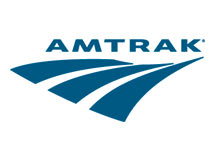LinkChina on Saturday unveiled what it billed as the fastest rail link in the world -- a train connecting the modern cities of Guangzhou and Wuhan at an average speed of 350 kilometres (217 miles) an hour.
The super-high-speed train reduces the 1,069 kilometre journey to a three hour ride and cuts the previous journey time by more than seven and a half hours, the official Xinhua news agency said.
Work on the project began in 2005 as part of plans to expand a high-speed network aimed at eventually linking Guangzhou, a business hub in southern China near Hong Kong, with the capital Beijing, Xinhua added.
"The train can go 394.2 kilometres per hour, it's the fastest train in operation in the world," Zhang Shuguang, head of the transport bureau at the railways ministry, told Xinhua.
1069 km = 664 miles. By air, that would be about 1½ to 2 hours, plus time for check-in, security, etc. How would that compare with a 3-hour train ride (just in terms of time for the total trip)?
Last edited by a moderator:








